Craig and I just spent three weeks in Ethiopia. Let me see if I can put this experience into words and pictures for you.
Ethiopia is unlike anywhere I have ever been. It is a tough place to visit, for a number of reasons, but should you consider going, here are a few words of advice. If you are feeling anything less that bulletproof, don’t go. Every aspect of life in Ethiopia will test you, and you want your force fields to be full strength for the challenge. If you are squeamish about your toilet facilities, let me give you two words to consider: pit toilets. If that doesn’t put you off, keep reading.
How do you feel about malaria? Sleeping in dusty mosquito netting? Getting every square inch of you covered in red dust? (And this wasn’t even dry season.) Taking cold showers? Seeing children dressed in rags, or not dressed at all?
For the first part of the trip, we traveled to the southern Omo Valley to see the most remote tribes in their traditional villages, living as they have for thousands of years. Merely getting there proved challenging, since the infrastructure in a large part of Ethiopia is virtually non-existent. This little video will give you an idea of what some of the drive felt like.
Simply sitting in the back seat and riding for a few hours was exhausting. Craig coined the term “rattled tourist syndrome” for the after effects of the experience.
People work hard here, so hard, for the basic necessities of life. Water is never taken for granted, and getting an adequate supply of water takes up a huge portion of every day. Jerry cans and plastic water bottles are everywhere.

Once they find water, they have to get it into containers and carry it home. Children would ask us for our empty water bottles, to replace the old ones they use to carry their personal water supply.
The following are photos of The Singing Well. The Borena tribe uses this method to supply adequate water for their cattle and goats.


What you can’t see from my vantage point is the deeper part of the well – at the rear, there are men about 30 feet down handing up buckets of water to the men on the top level.
Turn on your volume so you can hear the chanting.
Everyone works to contribute to the family’s well-being. Boys as young as 5 or 6 herd camels, cows or goats, and young girls tend the babies, wash clothes, or make bread. I cringed at the sight of girls carrying such heavy loads, or older women burdened with huge piles of firewood. I’ve seen pictures of my grandmother carrying similar bundles, but that was 150 years ago.




The first tribe we visited was the Gamo tribe in the Dorze village. It was market day, so our local guide took us for a stroll through the vendors. Needless to say, we stood out in the crowd, and were received with varying degrees of curiosity, friendliness, and impatience. I was petted, grabbed, swatted, and mostly greeted in a cordial way, especially by the children, who found me very amusing and approachable.

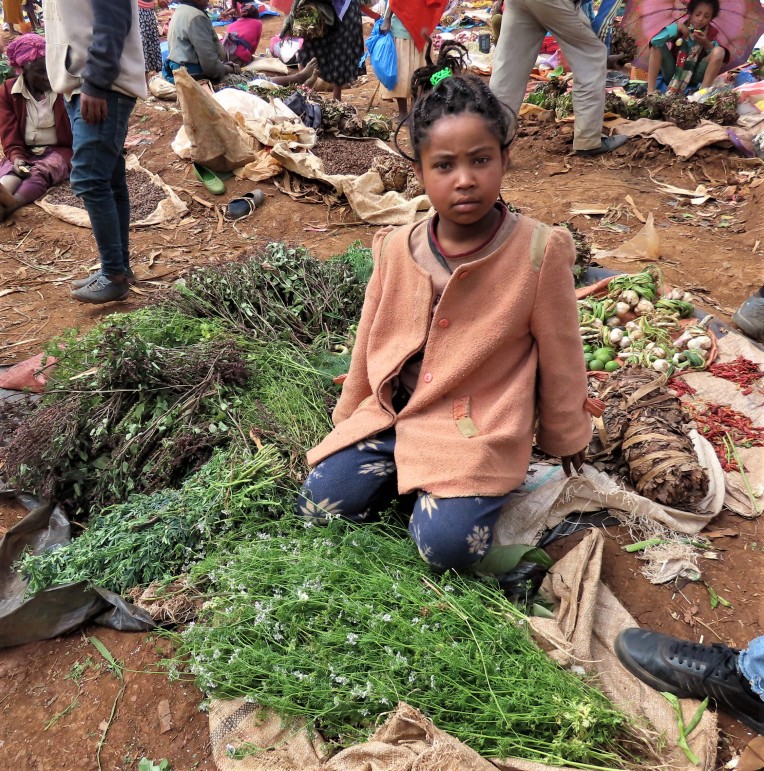
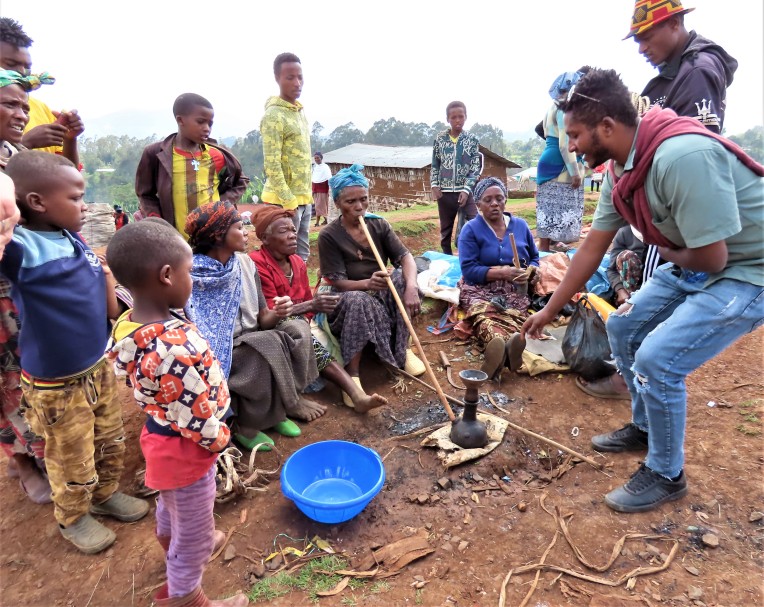
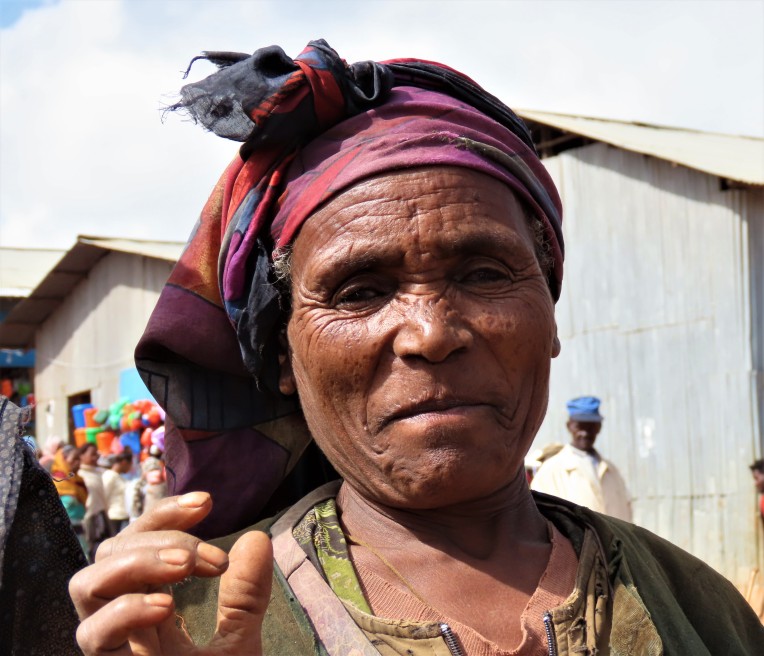

The Dorze live in structures called elephant huts, inspired by the animals that lived in the area hundreds of years ago. Inside we saw guest sleeping quarters, the cooking area with open fire, and the cattle chute, which led from the kitchen to a back section. The livestock sleeps inside with the family, to combat the cold night temperatures.

The following day we visited the Konso tribe. Their village has been named a UNESCO World Heritage site, because of the three circles of ancient rock walls surrounding it. As the village grew, additional circles were added to keep out intruders.

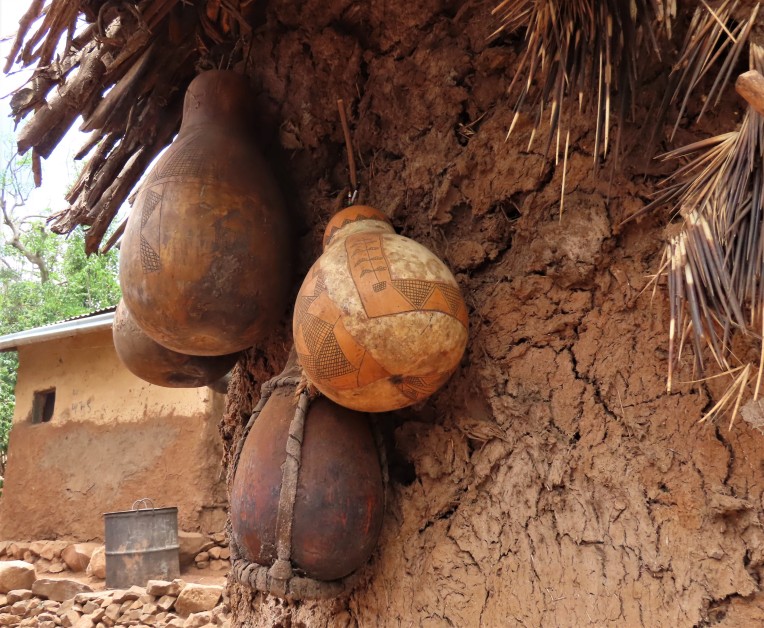

The Konso people mark the years by erecting generation poles. Each pole represents 18 years, and they stand in the village gathering spot. Unfortunately, time and termites have rotted the poles, so they are no longer an accurate representation of the age of the village.
I’ll end this segment with another market visit. People walked for many miles to bring their goods to the market, and had to carry it all back home if it didn’t sell. And even here in remote areas, we saw Chinese goods.
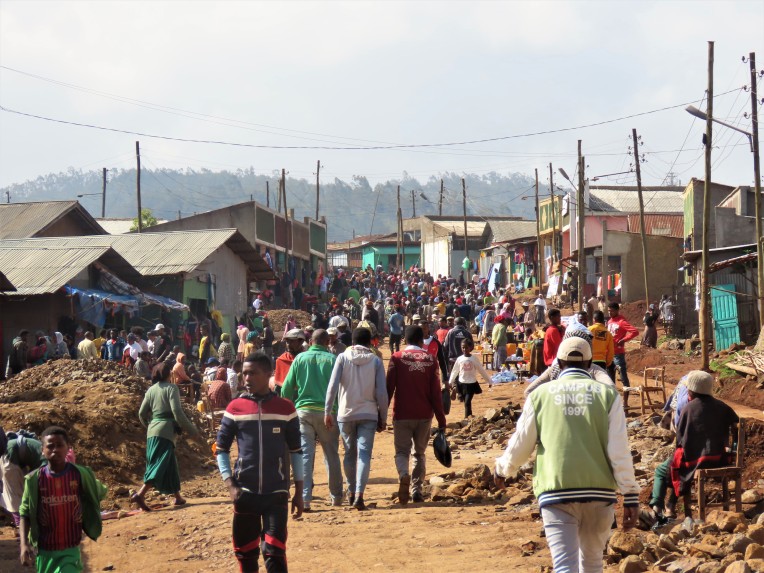


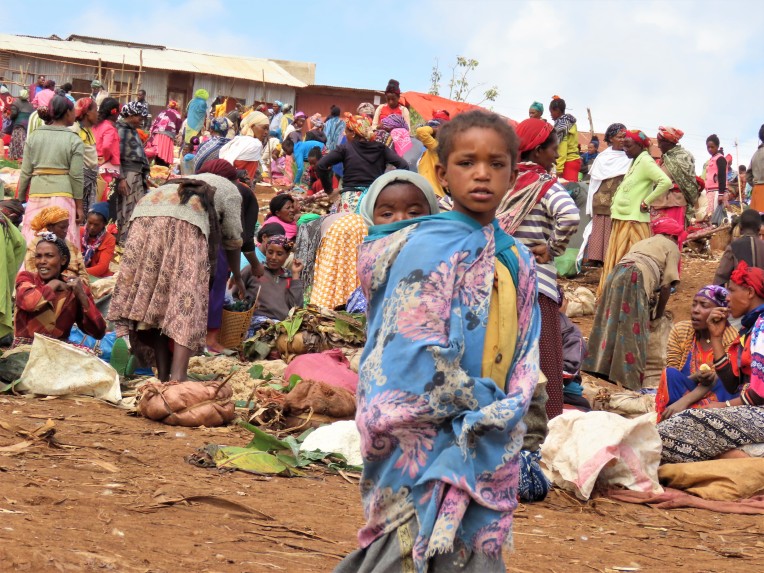


One barefooted little boy asked me to buy him a pair of shoes. The local guide said they sell for about 50 cents, and then cautioned me: if I bought a pair for this fellow, I would be inundated by other children wanting shoes also. I regretfully told him no.
